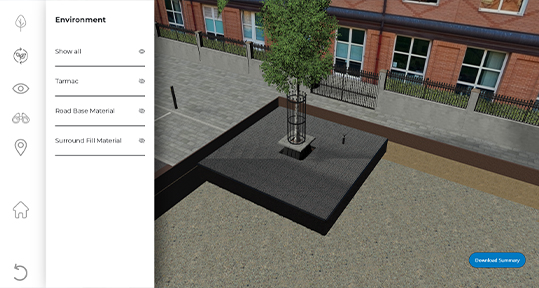Climate change is said to be the most significant environmental challenge of the century. Governments around the globe are grappling with what to do and how to mitigate the increasing threat. With COP21, the United Nations Conference on Climate Change, just around the corner, cooperation of over 190 countries aims to achieve a legally binding and universal agreement on climate.
Mature trees can play an important part in national climate change strategies. In this article, we review how trees effect climate change to offer landscape architects, urban designers, and other planning authorities a glimpse into why mature trees should be a critical part of our urban infrastructures.
The Relation Between Trees and Climate Change
Greenhouse gases trap heat as they accumulate in the atmosphere. It is this increased heat that leads to climate pattern changes. Carbon dioxide, which the human race has produced increasing amounts over recent decades, is one of the largest contributors to climate change. Trees decrease the concentration of carbon dioxide by absorbing it and converting it into clean oxygen. This natural process, known as photosynthesis, makes mature trees our most efficient, cost effective, and natural form to combat climate change.
Managing our urban forests to help them retain, and more importantly increase, their carbon storage potential can maximize the ability for trees to mitigate climate change. It is essential that we recognize the value of this benefit by providing for our urban tree populations, implementing urban tree planting best practices, and avoiding urban and rural deforestation wherever possible.
The Increasing Demand on Urban Planning & Design
By signing up to increasing international carbon reduction targets, governments around the world are issuing challenges to everyone involved in urban space design. While we cannot realistically claim that planting trees in cities will significantly affect global climate change, what we do know is that they have a major role to play in city climate mitigation and adaptation strategies.
Trees can reduce temperatures around them by providing shade and cooling through transpiration and evaporation processes. Clusters of well established trees probably represent the most effective tool available to urban designers in combating urban heat islands and heat sinks in cities. These pockets of heat accumulate in urban areas as a result of solar energy and glare reflected off engineered hard surfaces. These same surfaces store the heat and release it over night, scarcely having time to cool before the next sun rise.
“One well established tree can have the effect of
10 room sized air conditioners – but of course from a
totally sustainable and zero energy source!”
The current targets set for CO2 reduction are extremely challenging. By 2020, a reduction of 1.2 million tonnes of CO2 and higher per annum is looked for in many countries, and by 2050 a reduction target of 80% of 2009 levels. These targets however, could increase even more at COP21 in Paris.
Implementing Trees into the Strategy & How GreenBlue Can Help
If trees are to play a part in carbon reduction strategies, a lot needs to happen quickly. GreenBlue Infrastructure Solutions can help with implementing trees into urban planning in a way that will ensure they reach maturity and offer the extend of their benefits.
-
Assistance in evaluating project plans and tree pit designs
-
Providing guidance on best practice in tree pit layout and planting methods
-
Offering quality advice on urban tree requirements
-
Providing detailed tree pit specifications and costing
-
Supplying practical, cost effective products to assist tree establishment
-
On site support when planting
-
Providing suitable qualified contractors to execute installation
For more information about our products and services and our market leading ArborSystem tree planting packages, contact one of our knowledgeable consultants.





